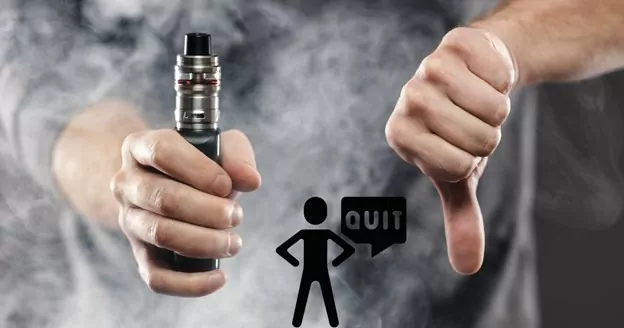Introduction
We already know how harmful cigarettes, effects of vaping on teeth and cigars are to oral health and overall health. Vaping has gained considerable popularity over the past few years, with many considering it a safer alternative to traditional cigarettes.
According to the Smoking Health ASH report, the number of people vaping has increased to 4.7 million alone in the UK.
While it’s often promoted as a less harmful option, the effects of vaping on oral health, particularly teeth, have raised concerns among dental professionals. Vapes are not classified as a smoking cessation aid in many countries yet.
However, is it genuinely safe, or are there hidden dangers behind the enticing flavors and sleek devices? What happens to your teeth and gums when you vape?
We will discuss the answers to these questions and what you can do to keep your teeth in great shape. In this blog post, we will explore how vaping affects your teeth and ways to mitigate these effects.
What is Vaping?
Vaping refers to inhaling and exhaling the aerosol, often called vapor, produced by an electronic cigarette or similar device.
● Unlike traditional cigarette smoke, which contains tobacco, the vapor from these devices is derived from E-liquid( flavoring liquid) with nicotine extracted from tobacco and varying amounts of flavorings, propylene glycol, vegetable glycerin, and other chemicals. It is also available in nicotine-free forms.
● A vaping device comprises a battery, cartridge, heating component, and mouthpiece. The vapor is produced when the device heats the liquid, creating an aerosol that users inhale into their lungs and exhale as dense white smoke.
● Vaping devices can come in various shapes and sizes, resembling traditional cigarettes, while others may look like pens, USB drives, and even smartphones.
● Propylene glycol, a part of E-liquid, breaks down in the mouth into acids, which can permanently damage enamel and even dentin by dissolving them away.
● This modern method of nicotine delivery has gained significant traction, especially among the younger generation, due to its perceived safety compared to traditional smoking.
Vaping vs. Traditional Smoking
● Traditional smoking involves the inhalation of tobacco smoke, which contains a multitude of harmful chemicals such as tar, nicotine, and carcinogens. These substances cause tooth discoloration, gum disease, tooth loss, and, in severe cases, oral cancer.
● While vaping eliminates the inhalation of tar and certain toxins found in tobacco smoke, it’s not entirely risk-free.
● Nicotine is a highly addictive compound. It can constrict blood vessels, causing gum tissues to receive less oxygen, contributing to gum disease.
● Even flavored e-liquids without nicotine can affect the structure and appearance of teeth by staining due to other harmful chemicals and sticky substances.
● Furthermore, the flavored e-liquids can lead to tooth decay as they are often high in sugar. Finally, the heat produced by the vape device can cause mouth dryness, leading to higher susceptibility to cavities and gum disease.
● While vaping is often marketed as a safer alternative to traditional cigarettes, it also carries potential risks to teeth and oral health. So it is not entirely safe!
Nicotine and Vaping: Side Effects of Nicotine
Vaping liquid contains varying amounts of nicotine, so side effects vary depending on usage from person to person. More research is still needed to cover the effects of nicotine from vaping. The following side effects may be observed in a vape user:

Constricted Blood Vessels
● Nicotine in vaping can constrict blood vessels, reducing blood flow to the gums.
● Diminished blood supply may lead to compromised gum health.
Increased Risk of Gingival Diseases
● Gingivitis
● Gingival Recession
● Gingival Inflammation
Increased Risk of Periodontal Diseases
● Reduced blood flow caused by nicotine may elevate the risk of developing periodontal diseases.
Dry Mouth Induction
● Vaping can induce dry mouth, where saliva production is decreased.
● A dry mouth increases vulnerability to cavities and other dental problems.
Diminished Saliva’s Protective Role
● Saliva is crucial in neutralizing acids and aiding in enamel remineralization.
● Nicotine-related dry mouth can diminish saliva’s protective functions.
Potential for Tooth Sensitivity
● A dry mouth and potential gum and enamel issues can contribute to heightened tooth sensitivity.
Impact on Orthodontic Appliances
● Nicotine’s effects may extend to orthodontic appliances, potentially compromising their appearance and efficacy.
Staining Concerns
● Nicotine can contribute to teeth staining, affecting the aesthetic aspect of oral health.
Long-term Impact on Enamel
● Prolonged exposure to nicotine may contribute to enamel erosion, making teeth more susceptible to decay.
Combined Risks with Other Chemicals
● Nicotine is just one of many chemicals in vape juices; combined, it can contribute to a range of oral health issues.
Effects of Vaping on Teeth
While vaping does not involve tobacco combustion like traditional cigarettes, it is far from risk-free, especially when it comes to oral health. Let’s dive into some of the significant effects of vaping on teeth in detail.
Staining and Discoloration
● One of the key appeals of vaping for many smokers is the assumption that it won’t cause teeth staining or yellowing commonly associated with tobacco smoking.
● However, research suggests that vaping can cause teeth discoloration because the nicotine contained in e-cigarettes can turn yellow when it reacts with oxygen molecules.
Dry Mouth
● E-cigarette liquids contain ingredients like propylene glycol and glycerin. These substances are known to increase mouth dryness.
● A dry mouth lacks the necessary saliva to wash away food particles and bacteria, leading to bad breath and increasing the risk of cavities.
Gum Disease
● Nicotine, regardless of whether it’s from traditional cigarettes or e-cigarettes, is harmful to your oral health. It reduces blood flow to the gums, depriving them of vital nutrients and oxygen.
● This situation can lead to gum disease, characterized by symptoms like swollen, tender, or even red gums that bleed easily.
Oral Cancer Risk
● While e-cigarettes are marketed as a safer alternative to tobacco, they are not entirely risk-free. The aerosol (vapor) from e-cigarettes often contains potentially harmful chemicals like formaldehyde, acrolein, and methylglyoxal.
● Long-term exposure to these substances can potentially increase the risk of developing oral cancer.
Is Vaping That Bad for Overall Health?

The answer is Yes!
Beyond the oral health implications already discussed, it can also impact overall health.
● E-cigarette vapor contains potentially harmful chemicals that, when inhaled, can damage lung tissue and lead to respiratory issues.
● Nicotine can increase heart rate and blood pressure, potentially contributing to cardiovascular disease.
● Additionally, the addictive nature of nicotine can lead to dependence and associated psychological effects.
● Some studies have also suggested a potential link between vaping and mental health issues, such as anxiety and depression.
● It’s crucial to remember that while vaping is less harmful than traditional smoking, it is not risk-free. The long-term effects of vaping on overall health are still being studied, and more comprehensive data is needed to understand the potential impacts fully.
Preventive Measures
Given these risks, taking preventive measures to protect oral health is essential. Here are some steps you can take:
Regular Dental Hygiene Routine
Maintain a thorough oral hygiene routine, including brushing twice daily, flossing daily, and regular dental check-ups. This routine will help remove plaque, prevent tartar build-up, and catch potential problems early.
Reducing or Quitting Vaping
The most effective way to mitigate the oral health risks associated with vaping is to reduce or, better yet, quit altogether.
Speak to a healthcare professional for advice on effective cessation methods if you find quitting challenging.

Using Mouthwash for Oral Care
Adding a therapeutic mouthwash to your oral care routine can help combat the dry mouth caused by vaping.
Mouthwash can reach areas that your toothbrush can’t, offering added protection against cavities and gum disease. Consider alcohol-free brands to avoid further drying out your mouth.
Final Verdict
While vaping is often marketed as a healthier alternative to smoking, it’s crucial to understand that it does carry potential risks, especially to oral health. Staining, dry mouth, gum disease, and an increased risk of oral cancer are all possible consequences of vaping.
● Smoking and vaping of any form is never beneficial. So, one should consider quitting vaping.
● Set a good example.
● Adopt healthy activities
● Eat healthy food to maintain optimal nutritional status.
● Visit the dental office frequently.
Remember, maintaining good oral hygiene, reducing or quitting vaping, and using therapeutic mouthwashes can help mitigate these risks.
As with any health concern, it’s always best to consult a healthcare or dental professional for personalized advice. Stay informed, stay vigilant, and prioritize your oral health.







